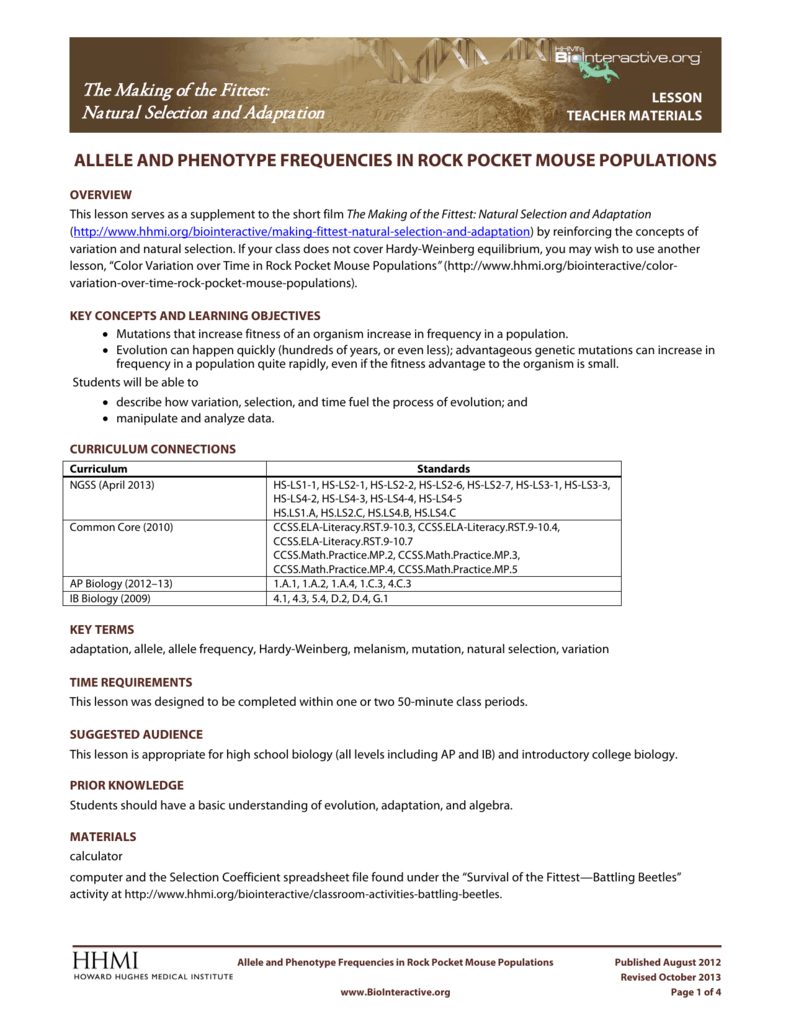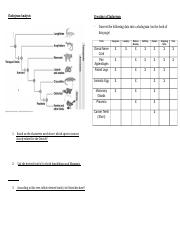
Educators earn digital badges that certify knowledge, skill, and experience. Save time lesson planning by exploring our library of educator reviews to over 550,000 open educational resources (OER).Īn all-in-one learning object repository and curriculum management platform that combines Lesson Planet’s library of educator-reviews to open educational resources with district materials and district-licensed publisher content.Ī comprehensive online edtech PD solution for schools and districts. Timely and inspiring teaching ideas that you can apply in your classroom Students look at cards showing light and dark mice on different substrates. COLOR VARIATION OVER TIME IN ROCK POCKET MOUSE POPULATIONS INTRODUCTION The tiny rock pocket mouse weighs just 15 grams, about as much as a handful of paperclips. It has been simplified from the original activity so that it is suitable for beginner biology students. Manage saved and uploaded resources and foldersīrowse educational resources by subject and topic This worksheet was modified from the HHMI Activity on color variation in the rock pocket mouse. Use your understanding of the process of natural selection (VOCSRAT = V ariation, O ver population, C ompetition, S urvival, R eproduction, A daptation, T ime) to explain HOW the change in the frequency of the dark and light Mc1r fur genes may have evolved in the mouse.Search reviewed educational resources by keyword, subject, grade, type, and more

_ Directly on the graph on the previous page DRAW LINES (or explain the trend) on the post-volcanic activity side to show a likely trend in the gene frequencies of Mc1r (light) and Mc1r (dark) gene versions in the mouse population during that period of time (how frequently the gene for each color is likely to show up in the mouse populations after the volcanic eruption period). Why are the frequencies of the Mc1r light and dark genes different in the pre-volcanic period? THINK! frequencies or genotype frequencies change over time, then evolution is. Color Variation over Time in Rock Pocket Mouse Populations: This activity provides an introduction to natural selection and the role of genetic variation by asking students to analyze illustrations of rock pocket mouse populations (dark/light fur) on different color substrates in the Sonoran Desert (light/dark) over time. What is the approximate gene frequency (%) of McR1 dark in the pre-volcanic period? _ PART A: NATURAL SELECTION AND EVOLUTION OF ROCK POCKET MOUSE POPULATIONS. The data is summarized in the table below. They recorded substrate color and coat-color frequencies for six locations. What is the approximate gene frequency (%) of McR1 light in the pre-volcanic period? _ Nachman and his colleagues collected rock pocket mice across 35 kilometers of Arizona Sonoran Desert, which include both dark, rocky lava patches and light, rocky granite areas. Gene frequency is a measure of what percentage of all the genes for a given characteristic one particular version represents - what percent of the population has a particular version of the gene. There was a volcanic eruption in Valley of Fires about a thousand years ago. Except for the ones found in the rocky areas of deserts like those in Valley of Fires in New Mexico. They are generally light-colored tiny mice. These mice are found in deserts of southwestern United States and Mexico.

The gene frequencies during the pre-volcanic time period for both versions of Mc1r are shown in the graph below. This model is of a population of rock pocket mice. Ancient DNA analysis (aDNA) indicates that both of these gene versions have been present throughout the history of this species. In this area, light colored mice have one version of Mc1r gene and dark colored mice have a different version of Mc1r gene. Scientists have learned that the coat color of the mice living in one part of the Mexican desert is linked to a gene called Mc1r. The Rock Pocket mouse presently exists in two colors: tan and black. The post-volcanic environment was, and still is, an approximately half and half mix of tan sandy areas and dark rocky zones (see picture with mice below).

This lava was mafic in mineral consistency and therefore solidified into dark igneous rock. However, tectonic plate movement in the “medium” past resulted in volcanic eruptions that tossed lava irregularly over the desert habitat of the rock pocket mouse. As might be expected, the sandy desert is a dry landscape and is mostly a light tan color. These areas were, in the distant geologic past, entirely sandy desert. It has been called the “snickers bar of the desert” as it is a prey item for a variety of species, most prominent of which is the owl, a visual predator.

intermedius ) is found in the southwestern United States and adjacent regions of Mexico. I can apply the theory of natural selection to explain how a specific adaptation could have evolved over time I can explain how the frequency of a trait may change over time due to natural selection


 0 kommentar(er)
0 kommentar(er)
